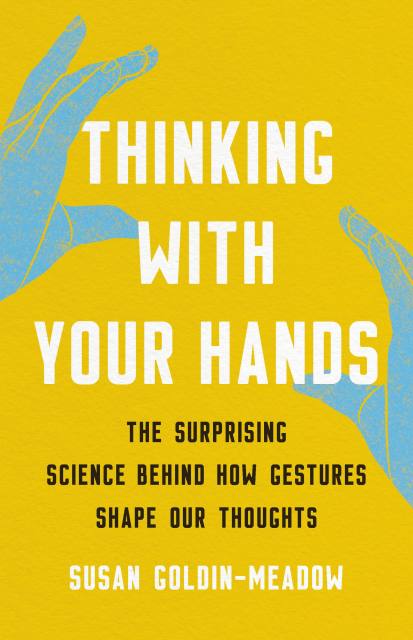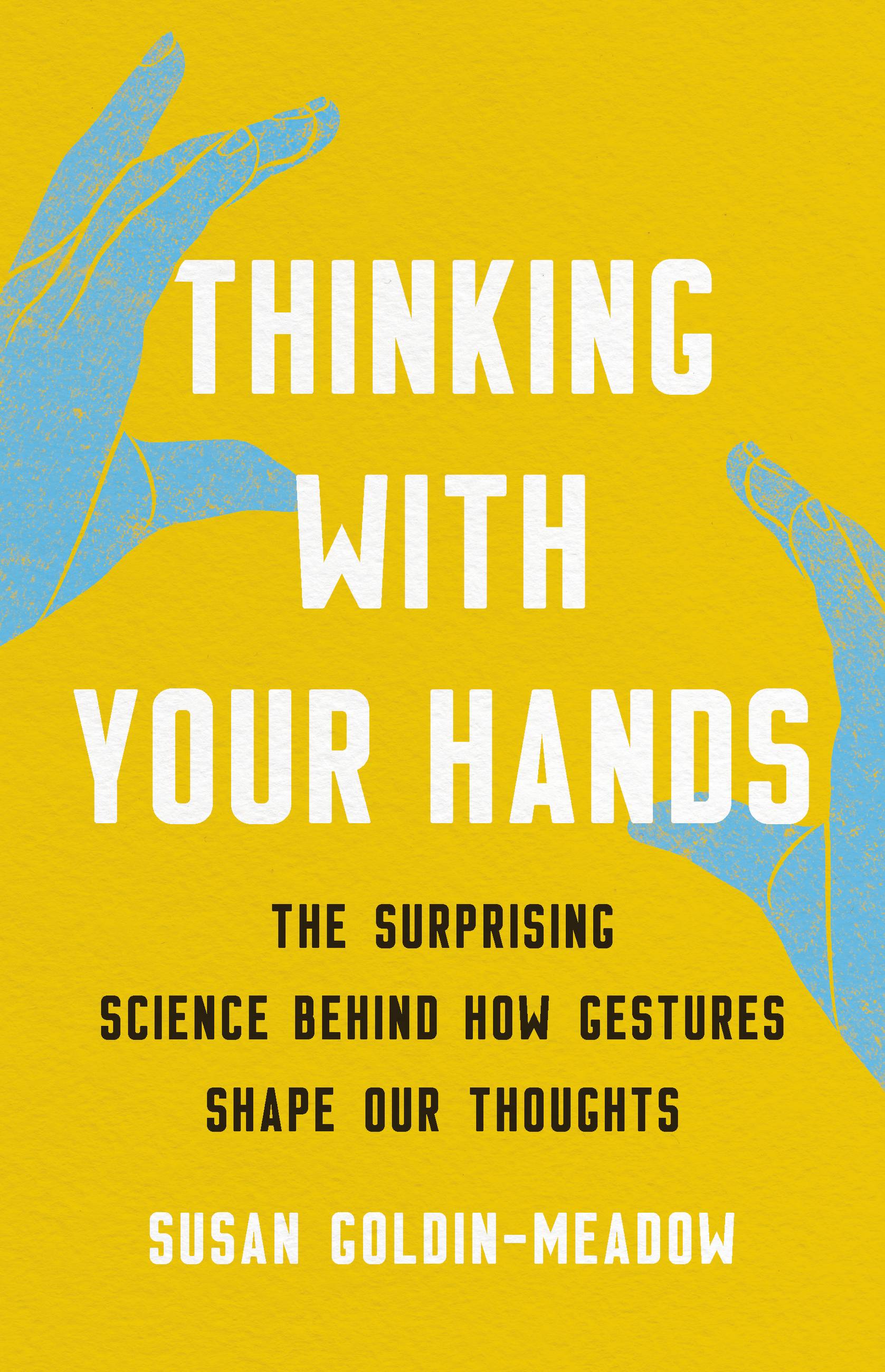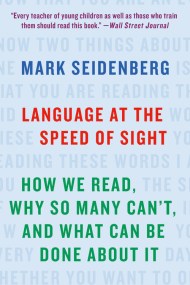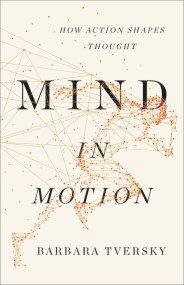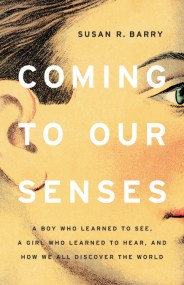Promotion
25% off sitewide. Make sure to order by 11:59am, 12/12 for holiday delivery! Code BEST25 automatically applied at checkout!
By clicking “Accept,” you agree to the use of cookies and similar technologies on your device as set forth in our Cookie Policy and our Privacy Policy. Please note that certain cookies are essential for this website to function properly and do not require user consent to be deployed.
Thinking with Your Hands
The Surprising Science Behind How Gestures Shape Our Thoughts
Contributors
Formats and Prices
- On Sale
- Jun 13, 2023
- Page Count
- 272 pages
- Publisher
- Basic Books
- ISBN-13
- 9781541600805
Price
$30.00Price
$38.00 CADFormat
Format:
- Hardcover $30.00 $38.00 CAD
- ebook $17.99 $22.99 CAD
This item is a preorder. Your payment method will be charged immediately, and the product is expected to ship on or around June 13, 2023. This date is subject to change due to shipping delays beyond our control.
Buy from Other Retailers:
An astounding account of how gesture, long overlooked, is essential to how we learn and interact, which “changes the way you think about yourself and the people around you.” (Ethan Kross, bestselling author of Chatter)
We all know people who talk with their hands—but do they know what they’re saying with them? Our gestures can reveal and contradict us, and express thoughts we may not even know we’re thinking.
In Thinking with Your Hands, esteemed cognitive psychologist Susan Goldin-Meadow argues that gesture is vital to how we think, learn, and communicate. She shows us, for instance, how the height of our gestures can reveal unconscious bias, or how the shape of a student’s gestures can track their mastery of a new concept—even when they’re still giving wrong answers. She compels us to rethink everything from how we set child development milestones, to what’s admissible in a court of law, to whether Zoom is an adequate substitute for in-person conversation.
Sweeping and ambitious, Thinking with Your Hands promises to transform the way we think about language and communication.
-
“Thinking With Your Hands is a book of science exposition, something like a lecture from a good professor. …The subject is fascinating.”Timothy Farrington, Wall Street Journal
-
"a masterly tour through a lifetime’s research… No one who reads his book could ever again think that gesturing shows only a lack of control. It is about thinking and communication, and is a sophisticated aid to both.”The Economist
-
“[a] thorough and powerful book”Lisa Aziz-Zadeh, Science
-
"Thorough and insightful"Dan Falk, Undark Magazine
-
"This book is big."Terri Schlichenmeyer, Bookworm Sez
-
“readers will be captivated by the nuance and depth of her analysis, which excavates a topic that’s universally relevant yet little understood by most. This fascinates.”Publishers Weekly
-
“thought-provoking… a fascinating look into communicating with gestures.”Bridgette Whitt, Library Journal
-
"We modern humans swim in a sea of words, both written and spoken. Susan Goldin-Meadow reveals a deeper current of communication: the gestures we make with our hands. Her book is a fascinating exploration of the way gesture shapes how we learn, how we interact, even how we imagine and create. Thinking With Your Hands is an accessible and enjoyable book by the researcher who remade the field."Annie Murphy Paul, author of The Extended Mind
-
“Susan Goldin-Meadow has expanded our understanding of language with her fascinating research on gesturing, and in this book she illuminates the nature of gesture and its intimate relationship to language and communication. Thinking With Your Hands is rich with information and insight.”Steven Pinker, Johnstone Professor of Psychology, Harvard University, and author of The Language Instinct
-
“Susan Goldin-Meadow has astonished the scientific community time and again with her pathbreaking discoveries. Now she has written a tour de force for the rest of the world to benefit from. Thinking With Your Hands is one of those rare books that doesn’t just entertain and inform but changes the way you think about yourself and the people around you. It should be required reading for anyone who has ever used their hands to convey an idea or witnessed someone else do the same, which is to say, all of us.”Ethan Kross, bestselling author of Chatter
-
“This fascinating book will make you watch others’ hands—and be aware of your own. You will think differently about the nature of language, the nature of communication, and about the many ways that gestures can change thought, your own, and that of others.”Barbara Tversky, author of Mind in Motion
-
“Thinking With Your Hands provides a fascinating look into the universal human phenomenon of gesturing, in both children and adults. Gesture is a critically important component of human communication, and this book is a wonderful and enjoyable contribution to its understanding. I highly recommend it.”Henry L. Roediger III, James S. McDonnell Distinguished University Professor, Washington University in St. Louis
-
“Thinking With Your Hands gives us an inspirational overview of a lifetime of work on an aspect of human behavior that is fundamental to who we are as a species. With humor and humility, Susan Goldin-Meadow introduces us to the inner workings of gesture and the tireless efforts of those scientists trying to understand it. Richly illustrating her explanations with a huge array of thought-provoking examples, she reveals how our hands help us think and convey information about our unspoken inner world; what gesture can tell us about the evolution of language; and how understanding gesture could help us become better parents, doctors, and teachers. This is an accessible, eye-opening, and endlessly fascinating account from the undisputed authority in the field.”Simon Kirby, Professor of Language Evolution, University of Edinburgh
-
“Gesture is all around us, but we often fail to understand its importance. In this book, Susan Goldin-Meadow shows how gesture forms an essential parallel to language, one that provides a unique window into our thoughts. Thinking With Your Hands reveals a hidden dimension of human communication.”Carol Dweck, Stanford University
-
“Young children communicate in rich ways with gestures before language. With the acquisition of language, their gestures take on new functions - not just for communication but for supporting thinking. Susan Goldin-Meadow’s new book tells this story, much of it based on her own research, with both wisdom and wit.”Michael Tomasello, Duke University
Newsletter Signup
By clicking ‘Sign Up,’ I acknowledge that I have read and agree to Hachette Book Group’s Privacy Policy and Terms of Use
